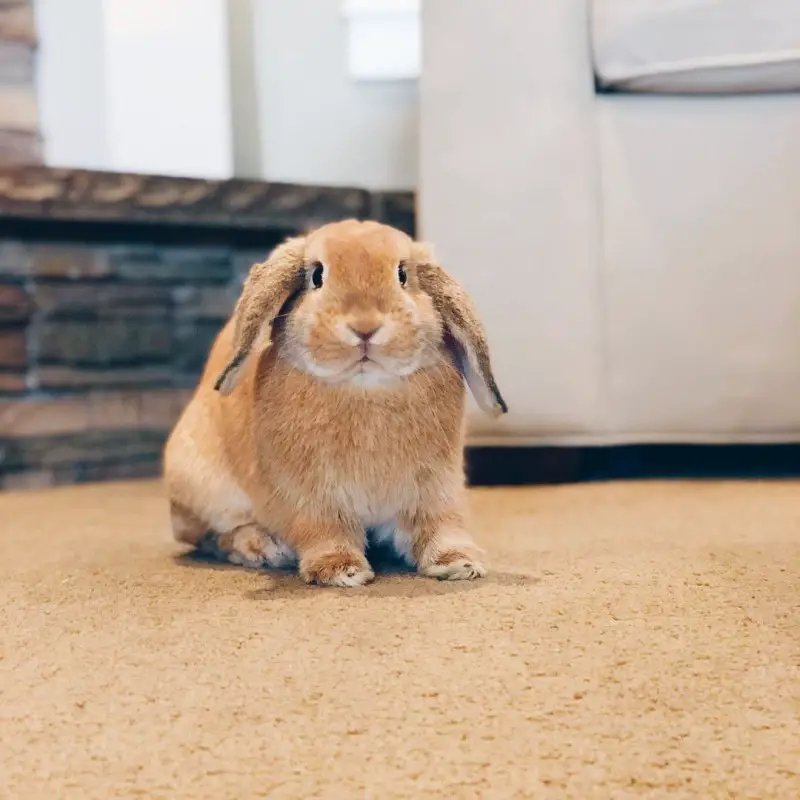
When you dive into the world of Holland Lops, it’s important to understand their specific requirements. Whether you’re setting up their living space, figuring out what to feed them, or establishing a grooming routine, each aspect is crucial to keeping your bunny happy and healthy. So, grab a cup of coffee, and let’s hop into the essentials of caring for your new furry friend!
Creating the Perfect Home for Your Holland Lop
Your Holland Lop’s living space is more than just a cage; it’s its sanctuary. Ideally, you want to provide an environment where they feel safe and can express their natural behaviors, like hopping around and exploring. A spacious rabbit cage is essential, and it should be at least 4 feet long for a single rabbit. This gives them enough room to move around comfortably.
Don’t forget about bedding! You can use materials like hay or paper-based products, which not only absorb moisture but also keep the space cozy. Avoid cedar or pine shavings, as they can be harmful to your bunny’s respiratory system. Also, consider adding a few hiding spots with boxes or tunnels; rabbits love to pop in and out of things, and it gives them a sense of security.
Lastly, make sure their home is in a quiet area, away from direct sunlight and drafts. Rabbits are sensitive creatures, so a calm environment is essential. Regularly check the temperature, as they thrive in temperatures between 60°F and 70°F. A comfortable home will keep your Holland Lop happy and active!
Diet: What Should Your Holland Lop Eat?
Feeding your Holland Lop a balanced diet is crucial for their health. Their main menu should consist of hay, fresh vegetables, and a limited amount of pellets. Think of hay as the bread and butter of their diet—it’s what keeps their digestive system functioning properly. Timothy hay is a popular choice, but you can also consider other grass hays like orchard or meadow hay. Aim for unlimited hay supply, as it aids in dental health and prevents boredom.
You might be wondering about veggies. Fresh greens are a wonderful addition to their diet. Leafy greens like romaine lettuce, kale, and cilantro can be served daily. Just remember to introduce new veggies gradually to avoid any tummy troubles! Avoid starchy vegetables like carrots and peas, as they can lead to obesity.
Lastly, keep pellets to a minimum—about a quarter cup for an adult rabbit is sufficient. Choose high-quality pellets that are high in fiber and low in protein. This keeps your bunny in good shape and helps them maintain a healthy weight. Always provide fresh water, too; hydration is just as important as what they eat!
How to Groom Your Holland Lop
Grooming a Holland Lop is both a bonding experience and a necessity for their health. Thanks to their fluffy fur, these bunnies need regular grooming to prevent mats and tangles. Aim to brush your rabbit at least once a week, though more frequent brushing may be needed during shedding seasons. Using a soft brush or a comb specifically designed for rabbits can make this task easier.
You might find that your Holland Lop enjoys grooming time. It can be a great way to bond! Start gently and let them get used to the brush. If they seem anxious, take breaks and offer treats to create a positive association with grooming. If your rabbit has longer or denser fur, consider investing in a deshedding tool to handle those tougher spots.
Don’t forget about nail trimming—keeping their nails at a healthy length is important, too. Aim to trim them every 4 to 6 weeks. If you’re unsure about how to do it, don’t hesitate to ask a vet for guidance. Regular grooming helps keep your bunny comfortable and happy!
Health Checks and Regular Vet Visits
Like any pet, your Holland Lop requires regular health checks. Routine veterinary visits are key to catching any potential issues early on. Ensure your bunny is spayed or neutered, not only to prevent unwanted litters but also for better health outcomes and behavioral benefits. A vet can also provide vaccinations and preventative care.
It’s a good idea to keep an eye on their behavior. Healthy rabbits are active and curious. If you notice your bunny being less playful or not eating as usual, it could be a sign of health issues. Look out for signs of dental problems, like difficulty eating or excessive drooling. Dental care is especially important for Holland Lops due to their unique tooth structure. Regular check-ups will ensure their teeth are healthy and prevent any painful conditions.
As part of your home care routine, you’ll also want to monitor their weight. A healthy Holland Lop should maintain a stable weight. If you notice any significant changes, it’s worth consulting your vet. Keeping up with your bunny’s health helps live a long, happy life together!
Creating a Safe Environment
Another vital aspect of caring for a Holland Lop is ensuring their environment is safe. Rabbits are naturally curious and will chew on anything they can get their paws on. That means you should bunny-proof your living space. Secure any electrical cords, remove toxic houseplants, and make sure there are no small items they might accidentally swallow.
If you’re letting your Holland Lop roam free around the house, consider using baby gates to restrict access to potentially harmful areas. Also, be mindful of other pets. Some animals might see your bunny as a plaything rather than a companion. Supervision is key, at least until you know how everyone will interact.
Lastly, providing enrichment is important. Bunnies need mental stimulation to stay happy. Toys like cardboard boxes, tunnels, and chew toys can keep their minds active and engaged. Rotate toys regularly to keep things fresh and exciting for your little friend.
Building a Bond with Your Holland Lop
Forming a strong bond with your Holland Lop takes time and patience, but it’s so rewarding! Spend time just sitting with them and letting them come to you. Offer treats like small pieces of fresh veggies or hay to encourage them to approach. Soon enough, they’ll associate you with good things!
You can also engage in playtime. Rolling balls, toss toys, or even playing hide-and-seek can be delightful. Rabbits love to run, jump, and explore. Providing safe areas for them to do this will keep them entertained and active.
Don’t forget the power of gentle petting, too. Many rabbits enjoy being petted, especially on the forehead or around the ears. Watch their body language closely; if they seem relaxed and comfortable, you’re doing a great job building trust.
In conclusion, caring for a Holland Lop rabbit is a rewarding experience that requires understanding their unique needs. From creating a comfy home and providing balanced nutrition to regular grooming and health checks, every aspect is essential. With a little time, love, and patience, you’ll develop a beautiful bond with your fluffy friend. So, enjoy every hop along the way!

